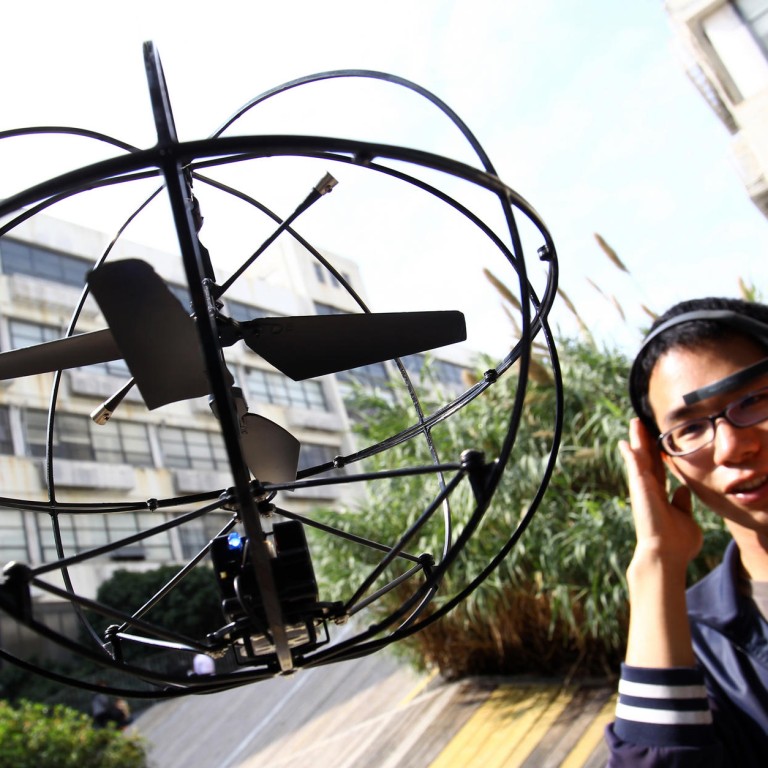
China looks to young entrepreneurs to drive its innovation economy
Creativity and innovation to become drivers of growth as China looks to young entrepreneurs to steer it away from an investment-led model
About a dozen people sit around a large table, listening intently as engineer Ryan Liang explains the science behind his latest creation, a virtual reality headset. He passes it around, and anticipation builds as the face of each person who tries it lightens up. "Wow. It's very … real," says one.
The group, intrigued by the device, overwhelms Liang with questions on its uses, technical specifications, and whether one day they'll be interacting with each other in the virtual world.
The meeting is hosted by Chaihuo, a "maker space" in a hip design district in Shenzhen where members build robots, hone programming skills, and dream up do-it-yourself technology projects.
Liang, 40, has worked for big companies including ZTE and Philips, but quit his office job to pursue his creative passions.
He met a group of like-minded people at Chaihuo, which has helped turn many bright ideas into real-world successes.
As economic growth slows and the property sector cools, the mainland is relying on more people like Liang, especially younger ones, to be creative and brave enough to turn their ideas into profitable businesses. The government hopes these eager young entrepreneurs will help transform the economy into one centred on innovation.
China is managing expectations of its economy by describing slower growth as the "new normal", drawing a line under the 10 per cent-plus growth rate of the past three decades.
The policy address by Premier Li Keqiang to the annual session of the National People's Congress this Thursday is expected to show signs of where the economy is heading.
Last year it grew 7.4 per cent, down from 7.7 per cent in 2013, and the slowest since 1990, when the mainland was hit by sanctions in the wake of the Tiananmen Square crackdown.
Export and investment-driven growth is seen as unsustainable after decades of cutthroat growth that has resulted in worsening pollution, deteriorating industrial structures, overcapacity in some industries, a suspected property bubble and piles of bad debt for local governments.
In January, the consumer price index grew 0.8 per cent, the lowest since November 2009, triggering fears of deflation.
Zhiqun Zhu, professor of political science and director of the China Institute at Bucknell University, said that achieving stable, sustainable growth this year was the leadership's priority.
"The era of fast growth is over, now China needs to focus on the quality of growth," Zhu said.
The premier's report is expected to address this. Two weeks ago, at a Politburo meeting chaired by President Xi Jinping to prepare Li's report, leaders in Beijing said they would rebalance the economy to rely more on innovation and entrepreneurship.
The Politburo said the country must make innovation a driving force of the economy and improve its mechanism for risk mitigation.
Xinhua quoted the Politburo as saying measures to encourage the public to start businesses would be a priority this year as the government pushed for reforms and a restructured economy.
For all the latest news from China’s parliamentary sessions click here
On Thursday, the state council rolled out a new tax policy for small and medium-sized enterprises, under which firms that pay 200,000 yuan (HK$250,000) or less in profits tax will have their bill cut in half. The policy comes into effect this year and will continue until 2017.
Against such a background it is perhaps not surprising that Li chose to visit Chaihuo, despite its small size, during his visit to Shenzhen last month. The choice of venue for visits by state leaders is often meant to send a political message.
Liang said he was glad the government saw the value in encouraging technological innovation, but said doing so needed to be a long-term endeavour.
"After Li's visit last month, there has been considerable hype around maker spaces around the country, with people expecting us to become one of the economy's new growth engines. Indeed many makers have become successful entrepreneurs, but we should note that innovation requires an open environment over a long time," Liang said.
Although Liang's VR headset has wowed many users, it has not been a big hit on the market, as competitors have created similar products at lower cost.
"The economy has relied too much on copying other people's creations and selling them at cheaper prices," he said.
"It will take a lot of change for people to realise the true value of innovation."
Hong Hao, managing director of research with BOCOM International, said this year would be the real test of the government's resolve to restructure the economy away from investment-driven growth to innovation.
Jonathan Woetzel, a Shanghai-based director at the consultancy McKinsey, said: "China's growth opportunities lie in innovations which can improve its productivity and efficiency.
"Future growth can come from innovation, not just in the use of technology but through imaginative ways of managing businesses and processes. Capturing these gains would make China a principal contributor to global growth."
In addition to innovation, most economists said the service sector would also drive growth.
Economists said the US was likely to lead the recovery among developed economies, but China would remain the bright spot among emerging markets.
"It's not all doom and gloom. And 7 per cent will be the new 10 per cent," said BOCOM's Hong.
